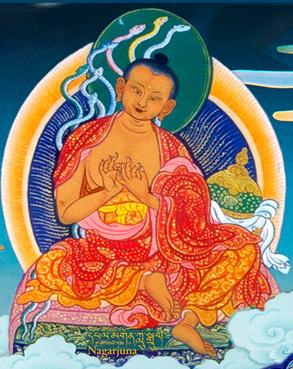Nagarjuna: Difference between revisions
| Line 3: | Line 3: | ||
===Collections of Writings=== | ===Collections of Writings=== | ||
Nagarjuna's writings mainly employ reasoning in order to clarify the view and the conduct of the buddhist teachings. His writings are categorized into three collections, corresponding to the three turnings of the wheel of the dharma. | Nagarjuna's writings mainly employ reasoning in order to clarify the view and the conduct of the buddhist teachings. His writings are categorized into three collections, corresponding to the three turnings of the wheel of the dharma. These three collections are: | ||
*[[Collection of Advice]] | *[[Collection of Advice]] | ||
Revision as of 21:05, 29 June 2007

Nagarjuna (Skt. Nāgārjuna; Wyl. klu sgrub) - one of the six great commentators (the ‘Six Ornaments’) on the Buddha’s teachings, the great scholar Nagarjuna (c.150-250) is revered as an unsurpassed master by all Buddhist schools. His teachings provide the foundation for the Madhyamika School, which propounds the ‘Middle Way’ philosophy, accepted as the highest view within the sutrayana. He was also the revealer of the Prajñaparamita Sutras, the core teaching of the second turning of the wheel of the Dharma.
Collections of Writings
Nagarjuna's writings mainly employ reasoning in order to clarify the view and the conduct of the buddhist teachings. His writings are categorized into three collections, corresponding to the three turnings of the wheel of the dharma. These three collections are: